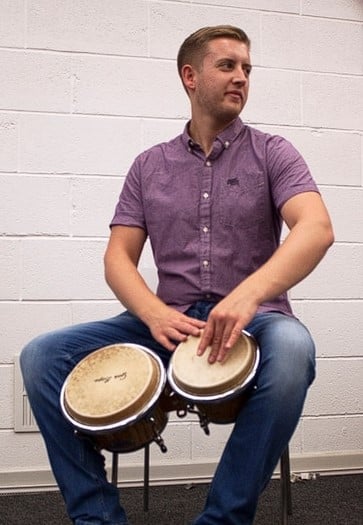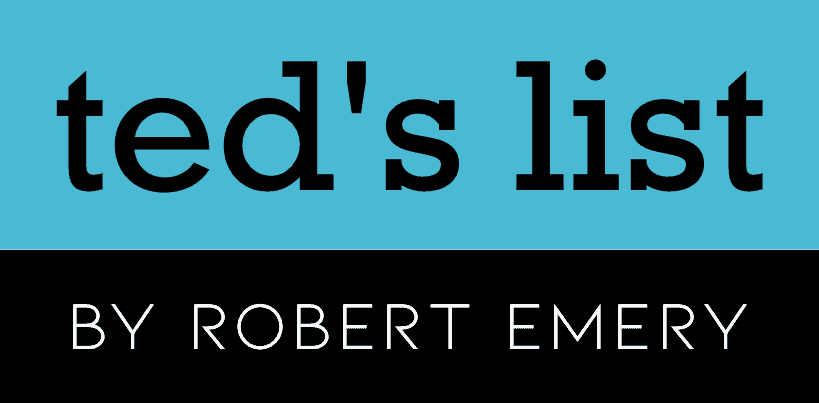Percussion FAQ's
Frequently Asked Questions
Here is the final section to our ‘Beginner’s Guide To Learning The Percussion’ series. Please do contact us if you have questions or suggestions, and remember to sign up for 4 Feature Friday…

Choosing An Instrument
What should I consider when buying a tuned percussion instrument?
The most common tuned percussion instruments for beginners are glockenspiel, xylophone and marimba. Choosing which one you get first depends on budget on the amount of space you have in your house! The glockenspiel is the smallest, cheapest and most portable, whereas the marimba is the most expensive and requires a lot of space!
What are the pros and cons of buying a used tuned percussion?
Although buying a used tuned percussion instrument may seem like a cost-effective option, it is important to be mindful that used instruments seldom come with any kind of warranty, and spare parts can be very expensive to get hold of. Buying a new instrument will give you the peace of mind that you have nothing to worry about!
Maintenance
How do I clean a tuned percussion instrument?
Dusting is an important part of a tuned percussion instrument’s upkeep. This is because hitting the bars of an instrument like this means the mallets will drive enough dirt and grim onto the surface. While they likely won’t stick and build up, it always helps that your instrument is kept clean. You can do this with a good, fine-feather duster. Afterwards, you should also polish the exterior (especially for wooden instruments) using high-quality furniture polish to keep their finish.
How do you care for a tuned percussion instrument?
Your main goal is to maintain the quality of sound that comes from the bars when you hit them with your mallet. Debris and other things can affect that, so be sure to keep the instrument covered and stored in a place where there is ample ventilation and humidity. Also, you should never ever hit the plates with too much force and never use anything other than its specialised mallet to hit the notes, or you will risk damaging the plates themselves.
Technique
Can I use other sticks to hit my instrument?
Technically, yes, but only those which are made specifically for percussion playing. This includes brushes, sticks with rubber handles with a bundle of metal fibres on one end, plastic and metal mallets, among others. You can also play it with sticks that have rubber coverings on the tips for the more sensitive instruments. Other things outside that aren’t advisable, as they might be too heavy, too sharp, or too blunt to produce a good sound from the plates.
What is triple tuning exactly?
Each bar consists of several tuned pitches, not just the basic ones. If these aren’t tuned the right way, they won’t produce a characteristic sound that you want. In a lot of cases, they may even sound out of tune and unpleasant to the ear (which, as a musician, you should have an idea about). Take the marimba or the xylophone, for example, where the lowest notes are where you’d most likely notice overtones. Tuning these overtones is where these instruments get their characteristic sound.
About the Author
Sam Jowett
Sam is a first class graduate of the Royal Welsh College of Music & Drama. He has played for a number of professional ensembles including the BBC National Orchestra of Wales, British Sinfonietta and the Novello Orchestra, which have led him to perform on some of the countries finest stages including the Royal Albert Hall and London Palladium.
Alongside Tongwynlais Music Academy, Sam is also a tutor for Rhondda Cynon Taf Music Service.
Sams current project is exploring the world of junk percussion, he also enjoys making whisky based cocktails.
Other posts by this author
General
What does tuned percussion mean?
Tuned percussion is a percussion instrument which produces musical notes of different pitches, as opposed to other percussion which only produces sounds of indefinite pitch. These instruments are tuned (able to produce a specific pitch) according to universal musical notation, and are pretty popular with young children and elementary school music programs. Some great examples include the xylophone, marimba, chimes, and orchestra bells to name a few. These instruments are played by using mallets or other specialised tools to hit individual notes whenever required.
What is the most common tuned percussion instrument?
The most common ones are those you’ve probably seen little children play in elementary school marching bands, such as the xylophone, marimba, tubular bells, glockenspiel, and the vibraphone. These instruments are used to perform harmonic or melodic sessions of a specific composition, which is why a lot of people consider the sounds they produce as pleasurable to the ears. Other types of these instruments include the timpani, chimes, and steel drums to name a few.
What does the term percussionist mean?
Percussion instruments in general are supposed to keep the rhythm. Without them, the entire orchestra or band will be off-tempo and will sound bad. Really bad. So you can consider the percussionist as the solid foundation that keeps the musical “house” erect. But being a percussionist is a multi-faceted job, which means you’ll have to be a master of a lot of different instruments most of the time. One minute you’re playing the chimes, next, you’ll be playing the marimba. A percussionist is a well-rounded musician in his own right, and if you are one, then salute to you!
What’s the difference between tuned and untuned percussion?
Tuned percussion instruments are pitched to produce individual notes, and are usually set up like a piano or keyboard. You follow regular musical notation to find the notes you need to hit, but instead of using your fingers to press keys, you hit bars using a mallet or another tool. Untuned percussion on the other hand is the total opposite: they’re not pitched to produce particular notes. Basically anything you can hit and produce a sound from is considered an untuned percussion instrument: even your pans and empty bottles!
Unpitched Percussion

Choosing An Instrument
Which instrument should I buy first?
If you are playing with sticks, the snare drum is probably the most obvious choice for your first unpitched percussion instrument. This versatile instrument will give you the opportunity to develop the techniques you will use for many other percussion instruments in the future.
If you are playing with your hands, then a pair of bongos or a pair of congas would be your best option to buy first, depending on your budget.
Which instruments should I buy next?
A percussionist is expected to have many different instruments in their arsenal.
If you are playing orchestral music you will need a triangle, tambourine, wood block and suspended cymbal for most pieces. Other instruments you might want to consider are crash cymbals and a bass drum.
If you are playing Latin American music you might like to augment your bongos or congas with a cowbell, shakers and a guiro.
Maintenance
How do you maintain your unpitched percussion instrument?
Make sure that you stash your instruments somewhere that’s not too hot, too cold, or too humid. They might not be as fragile as instruments such as the violin or the guitar, but percussion instruments are still very much vulnerable to environmental extremes.
If you have the option to buy hard cases, go for it! If you have a drum set, for instance, and you have to travel a lot, then a hard case is pretty much mandatory. The case will protect the drums from physical damage and help you stash them better.
How do I clean unpitched percussion?
Percussion care is not “you have to wipe this down with a specialised this and that.” No. All you need to do is rather simple: wipe it down with a soft, clean cloth after every use. There are also times when the hardware on your instruments will get rusty, so you’ll have to take care of that before the rust builds up. You don’t really need anything wet to clean unpitched percussion. Your biggest enemies are quite manageable: dust, stains, and physical damage from bumping or dropping. That’s it.
Technique
How do you improve at percussion?
Improving at percussion is as simple as three words: practise, practise, practise! But practising smart is your foremost goal. For instance, you should focus on improving particular sets of basic skills, such as your single and double strokes. And you should also polish other ones such as the five-stroke roll. Once you master these things, you’ll be able to take your playing and overall musicality to the next level. At the start, try to identify the problem areas with your drumming, then work it up from there. Why not start by reading our dedicated percussion practice guide.
How long does it take to learn unpitched percussion?
It’s very easy to pick up percussion. As early as within your first few weeks, you’ll be able to play along to simple beats! But the thing about unpitched percussion is, it’s very hard to master. That’s the price you pay for a rather discounted “entry fee.” To fully be able to not just play along but also improvise with a certain level of proficiency and showmanship, you will need to spend a few years learning the ropes and making your technique flawless. So don’t lose patience if you feel like your playing is starting to stagnate – re-focus with our guide to percussion technique.
General
Which percussion instruments are unpitched?
Instruments such as the bass drum, guiro, and even the maracas are all unpitched percussion. They are as the name suggests: they don’t have a specific pitch like a C, A, or Eb, or whatever. Their only purpose is to maintain a rhythm or provide accents to any musical piece, be it classical or modern iterations. The sounds that they produce are all unrelated to the harmony of the music itself, that’s why they’re technically on tempo and extra accent duty.
What’s the difference between drums and percussion?
Percussion is the umbrella term that includes a lot of instruments that you either bang or hit. The drums fit snugly under that umbrella. It is quite normal, however, for people to mistakenly interchange the two when talking about the instruments themselves. You can say that literally anything that can produce sound when you hit it is a percussion instrument, even your own body or typical household items. The drum still fits within that classification, since you do hit it to produce a sound.
What’s the difference between a drummer and a percussionist?
Here’s a rule of thumb: drummers are percussionists, but percussionists aren’t always drummers. Drummers are known colloquially to play either acoustic or electronic drum sets which have the usual components: 1 snare, 2 toms, 1 or 2 basses, and a selection of cymbals configured in a frame. A percussionist on the other hand won’t only play the drums, but also chimes, cymbals, bongos, and the like. It’s very easy to confuse the two with each other, but make no mistake: they are two different types of musicians.
What is the oldest percussion instrument?
The modern drum as we know it can trace its history back to the New Stone Age inhabitants of China, where these people discovered new uses for alligator skins aside from clothing and other applications. These first ever drums basically have the same construction as modern drums: a hollow cylinder that’s open at the top, with the top covered by a certain type of membrane (i.e. skin). Striking that membrane produces a resonating, booming sound loud enough to be heard from a distance, which likely helped with life back in those times.
About the Author

Sam Jowett
Sam is a first class graduate of the Royal Welsh College of Music & Drama. He has played for a number of professional ensembles including the BBC National Orchestra of Wales, British Sinfonietta and the Novello Orchestra, which have led him to perform on some of the countries finest stages including the Royal Albert Hall and London Palladium.
Alongside Tongwynlais Music Academy, Sam is also a tutor for Rhondda Cynon Taf Music Service.
Sams current project is exploring the world of junk percussion, he also enjoys making whisky based cocktails.
Other posts by this author
Find Out What 4 Things I’ve Been Using and Reviewing
4-Feature Friday does just what it says on the tin; sends an email every Friday with four of the most incredible things I’ve found that week
The e mail really can be about anything; ebooks, audio, tracks, gizmos, training tricks – so long as it’s pleasurable and interesting and fantastic, it’ll end up on the e-mail!
Be part of our group and enjoy the 4-Feature Friday email by subscribing below…





